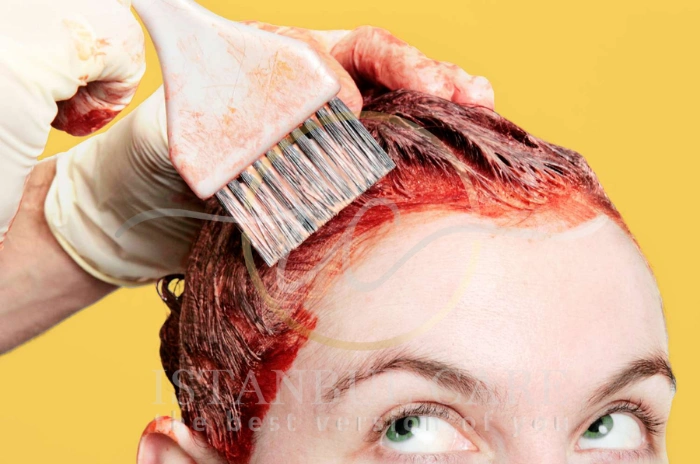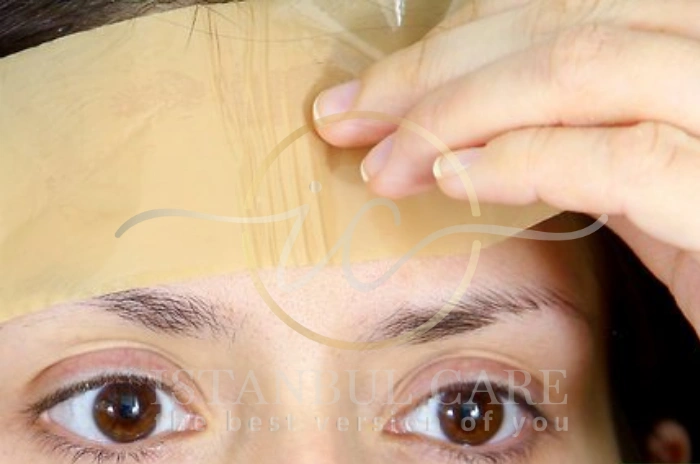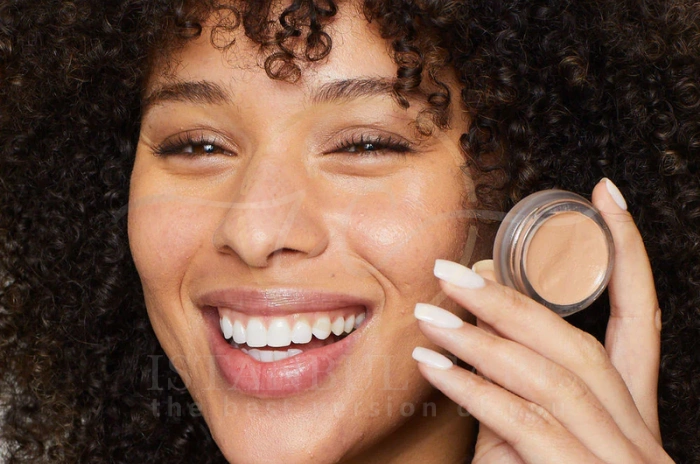Hair dye stains on skin are one of the most common beauty mishaps that happen during at-home coloring sessions. Whether you’re touching up your roots or completely changing your hair color, how to get hair dye off skin becomes an urgent concern when you notice those telltale dark marks around your hairline, ears, or hands. The good news is that with the right techniques and household items, you can effectively remove hair dye from skin without causing irritation or damage.
Most hair dye on skin incidents occur because the pigments in hair color are designed to be long-lasting and can easily transfer to your skin during application. The key to successful hair dye stain removal lies in acting quickly and using gentle methods that won’t harm your skin’s natural barrier. From simple soap and water to specialized hair dye stain remover techniques, there are numerous approaches to tackle this common problem.

Best Ways to Get Hair Dye Off Skin
The most effective approach to remove hair dye from skin involves starting with the gentlest methods first and gradually progressing to stronger solutions if needed. Time is crucial when dealing with fresh stains, as dried dye becomes significantly more challenging to remove.
Use Soap and Water First
The simplest method to get hair dye off skin is using warm water and regular soap. This approach works best on fresh stains that haven’t had time to set into the skin. Gently massage the affected area with soap using circular motions, then rinse thoroughly with warm water. The combination of soap’s cleansing properties and warm water helps lift the dye particles from your skin’s surface.
For stubborn areas, try using dish soap instead of regular hand soap, as it’s designed to cut through oils and pigments more effectively. This gentle hair dye stain removal method should always be your first attempt, especially on sensitive facial skin.
Try Olive Oil or Baby Oil for Gentle Removal
Oil-based solutions work exceptionally well as a hair dye stain remover because they help break down the chemical bonds in hair dye. Apply a small amount of olive oil or baby oil to a cotton pad and gently rub the stained area in circular motions. The oil will gradually dissolve the dye while moisturizing your skin.
This method is particularly effective for dye on skin around the ears and neck area. After working the oil into the stain for several minutes, wash the area with soap and water to remove any oily residue.
Apply Makeup Remover or Cleansing Cream
Makeup remover for hair dye is an excellent option because it’s specifically formulated to remove pigmented products from skin. Choose an oil-based makeup remover or cleansing balm for best results. Apply the product to a cotton pad and press it against the stained area for 30 seconds before gently wiping away.
Micellar water hair dye removal is another gentle option that works particularly well on facial skin. The micelles in the water help lift dye particles without harsh scrubbing, making it ideal for sensitive areas around the eyes and forehead.
Use Rubbing Alcohol for Stubborn Stains
When gentler methods fail, rubbing alcohol remove hair dye can be highly effective for persistent stains. Soak a cotton ball with isopropyl alcohol and dab it on the affected area. Be careful not to rub too vigorously, as alcohol can be drying to the skin.
This method works because alcohol acts as a solvent, breaking down the dye’s molecular structure. Always follow up with a moisturizer after using alcohol to prevent skin dryness and irritation.
Quick Method Comparison
| Method | Effectiveness | Gentleness | Best For |
|---|---|---|---|
| Soap & Water | ★★☆ | ★★★ | Fresh stains |
| Oil-Based | ★★★ | ★★★ | Sensitive skin |
| Makeup Remover | ★★★ | ★★★ | Face area |
| Rubbing Alcohol | ★★★★ | ★★☆ | Stubborn stains |
| Baking Soda | ★★★ | ★★☆ | Body stains |
Natural and Household Methods to Remove Hair Dye
Home remedies for dye stains offer safe, accessible alternatives to commercial products. These methods use common household stain removers that you likely already have in your kitchen or bathroom.
Try Baking Soda and Dish Soap Paste
Creating a paste with baking soda hair dye remover and dish soap provides gentle abrasive action that helps lift embedded dye particles. Mix equal parts baking soda and dish soap to form a thick paste. Apply this mixture to the stained area and gently massage in circular motions for 1-2 minutes before rinsing with warm water.
The alkaline nature of baking soda helps neutralize the acidic components in hair dye, while dish soap provides additional cleaning power. This combination is particularly effective for DIY hair dye stain removal on hands and fingers.
Use Toothpaste on the Stained Area
Toothpaste hair dye remover works due to its mild abrasive properties and whitening agents. Apply a small amount of whitening toothpaste to the stained area and gently rub it in using circular motions. Let it sit for 2-3 minutes before rinsing thoroughly with water.
Choose a toothpaste with baking soda or peroxide for enhanced cleaning power. This method is particularly useful for small, localized stains and works well as part of your how to clean hair dye stains routine.
Use Vinegar with Caution
White vinegar can help get rid of hair dye stains due to its acidic nature, which can break down certain dye molecules. Mix equal parts water and white vinegar, apply to a cotton pad, and gently dab the stained area. Be cautious with this method, especially on sensitive skin, as vinegar can cause irritation.
Always dilute vinegar before use and avoid this method if you have cuts or sensitive skin in the affected area.

How to Prevent Hair Dye from Staining Skin
Prevent hair dye stains by taking proper precautions before beginning your coloring process. Prevention is always easier than removal and helps you avoid the need for aggressive cleaning methods later.
Apply Petroleum Jelly Around the Hairline Before Coloring
Creating a protective barrier for hair dye using petroleum jelly is one of the most effective prevention methods. Apply vaseline for hair dye protection around your hairline, ears, and neck before starting the coloring process. The petroleum jelly creates an impermeable barrier that prevents dye from adhering to your skin.
Make sure to apply a generous layer, focusing on areas where dye commonly drips or spreads during application. This simple step can save you significant time and effort in cleanup later.
Wear Gloves and Use Barriers to Avoid Stains
Always wear gloves during the hair dyeing process to protect your hands from staining. Additionally, place a towel around your shoulders and use hair clips to section your hair properly, minimizing the risk of accidental contact with skin.
Consider using a headband or hair wrap to protect your forehead and ears from potential drips or splashes during application.
Preventing Hair Dye Stains Before They Happen
Proper preparation is essential for how to get rid of dye on skin issues before they occur. Taking preventive measures saves time and reduces the risk of skin irritation from removal methods.
Pre-Dye Skin Protection Tips
Before beginning any hair coloring process, cleanse your skin thoroughly to remove oils and makeup that might interfere with barrier products. Apply a thin layer of petroleum jelly or thick moisturizer to all areas where dye might come into contact with skin.
Pay special attention to the hairline, temples, ears, and back of the neck. These areas are most prone to staining and can be difficult to clean thoroughly after the fact.
Best Practices for Clean Application
Use proper application tools like brushes and combs designed for hair coloring. Work in small sections and avoid overloading your brush with dye. Keep damp cotton swabs nearby to immediately wipe away any accidental drips or smears.
Maintain good posture during application to prevent dye from dripping onto your face or neck. Take your time with the process rather than rushing, which often leads to messy application and skin staining.
Deep Cleaning for Stubborn Dye Stains
When basic methods fail to clean hair dye off skin, more intensive approaches may be necessary. These methods should be used sparingly and followed by proper skin care.
Mix Dish Soap and Baking Soda Paste
For persistent stains, create a stronger cleaning paste by combining dish soap with baking soda and a small amount of water. This mixture provides enhanced cleaning power while remaining relatively gentle on skin. Apply the paste and let it sit for 5 minutes before gently scrubbing with a soft brush or washcloth.
This method works particularly well on hand and finger stains where the skin is less sensitive than facial areas.
Use Liquid Laundry Detergent
Liquid laundry detergent contains enzymes and surfactants designed to break down stains, making it effective for how to clean hair dye stains. Apply a small amount directly to the stained area and work it in gently with your fingers. Let it sit for 2-3 minutes before rinsing thoroughly.
Choose a gentle, fragrance-free detergent to minimize the risk of skin irritation.
Carefully Use Nail Polish Remover
Acetone-based nail polish remover can be effective for very stubborn stains, but use it with extreme caution. Apply a small amount to a cotton swab and dab gently on the stained area. Rinse immediately after application and follow with moisturizer.
This method should only be used on non-facial areas and avoided if you have sensitive skin.
Apply a Small Amount of Ammonia
Household ammonia can help break down persistent dye stains, but it must be used with great care. Dilute ammonia with equal parts water and apply sparingly with a cotton swab. Work in a well-ventilated area and rinse thoroughly after use.
This method should be considered a last resort and never used on facial skin or if you have any skin sensitivities.
Exfoliation and Oil-Based Cleansers
Physical and chemical exfoliation can help remove hair dye from skin that has penetrated deeper into the skin’s surface layers.
Apply an Exfoliant Scrub for Deeper Cleaning
Use a gentle facial or body scrub to help lift embedded dye particles. Apply the scrub to damp skin and massage gently in circular motions. Focus on areas with the heaviest staining, but avoid over-scrubbing which can cause irritation.
Choose scrubs with fine particles rather than coarse ones to prevent micro-tears in the skin.
Use Oil-Based Cleanser for Stubborn Stains
Oil-based cleansers are particularly effective for olive oil to remove hair dye stubborn stains because they help dissolve the oil-soluble components in hair dye. Apply the cleanser to dry skin and massage thoroughly before adding water to emulsify and rinse away.
This method is gentle enough for daily use if needed and helps maintain skin moisture while cleaning.
Try an Overnight Moisturizing Mask After Cleansing
After intensive cleaning sessions, apply an overnight moisturizer stain fade treatment to help restore skin barrier function. The moisturizing ingredients help speed up natural skin cell turnover, which gradually fades remaining stains.
Choose products containing ingredients like ceramides, hyaluronic acid, or glycerin for optimal skin restoration.

Covering Remaining Stains with Makeup
When immediate removal isn’t possible or practical, cosmetic coverage can provide a temporary solution for hair dye on skin visibility.
Use Primer, Foundation, and Concealer to Hide Dye Marks
Start with a color-correcting primer that counteracts the specific hue of your dye stain. Apply foundation over the primer, followed by concealer for additional coverage. Set everything with translucent powder to ensure longevity.
Choose long-wearing, waterproof formulas for events or situations where you need reliable coverage throughout the day.
Trust It Will Fade in a Few Days
Remember that skin naturally sheds dead cells every 24-48 hours, so even persistent stains will gradually fade on their own. Most hair dye stain remover efforts combined with natural skin turnover will eliminate stains within 3-7 days.
Be patient with the process and avoid over-cleaning, which can cause more irritation than the original stain.
Preventing Face Stains Before Coloring
Facial skin requires special attention during hair coloring due to its sensitivity and visibility.
Creating a Protective Barrier
Apply a thick layer of petroleum jelly or specialized hair dye barrier cream around your entire hairline, including the temples, forehead, and behind the ears. Use a makeup sponge or brush to ensure even coverage without getting product in your hair.
Consider using professional barrier films designed specifically for hair coloring if you frequently dye your hair at home.
Application Techniques to Avoid Drips
Work with smaller amounts of dye at a time to maintain better control during application. Use a fine-toothed brush for precision around the hairline and keep cotton swabs handy for immediate cleanup of any mistakes.
Tilt your head slightly forward during application to encourage drips to fall away from your face rather than onto it.
Immediate Cleanup for Fresh Stains
Keep damp cotton pads within easy reach during the coloring process. If dye contacts your skin, gently blot it away immediately before it has time to set. Don’t rub or wipe, as this can spread the stain or push it deeper into skin pores.
The faster you act on fresh stains, the easier they’ll be to remove completely.
Special Tips for Facial or Beard Dye
Facial hair dyeing presents unique challenges that require modified approaches to get rid of hair dye stains.
Use The Same Removal Strategies on the Face
The same gentle dye removal methods that work on other areas of your body can be applied to facial stains, but with extra caution. Start with the mildest approaches like soap and water or makeup remover before progressing to stronger methods.
Pay special attention to the delicate eye area and avoid getting cleaning products too close to your eyes or mouth.
Avoid Harsh Chemicals on Thin Facial Skin
Facial skin is more sensitive and thinner than skin on your hands or body, so avoid using harsh chemicals like ammonia or acetone on your face. Stick to gentle, face-safe products and methods to prevent irritation or chemical burns.
If you must use stronger products, test them on a small, inconspicuous area first and dilute them more than you would for body use.
Aftercare to Protect Your Skin
Proper post-cleaning care is essential to maintain healthy skin after hair dye stain removal efforts.
Wash Thoroughly After Using Harsh Products
After using any chemical-based cleaning methods, wash the treated area thoroughly with mild soap and lukewarm water. This removes any residual cleaning products that could continue to irritate your skin or cause delayed reactions.
Pay particular attention to areas where cleaning products might have pooled or concentrated during the removal process.
Apply Moisturizer to Prevent Dryness
Many hair dye stain remover methods can be drying to the skin, so always follow up with a good moisturizer. Choose products with gentle, nourishing ingredients that help restore your skin’s natural barrier function.
Apply moisturizer while your skin is still slightly damp to lock in hydration and promote faster healing of any minor irritation.
When to See a Doctor for Hair Dye Stains
While most DIY hair dye stain removal efforts are safe, certain situations warrant professional medical attention.
Signs of an Allergic Reaction or Skin Irritation
Watch for symptoms like severe redness, swelling, blistering, or intense itching around stained areas. These could indicate an allergic reaction to either the hair dye or the cleaning products you’ve used.
Difficulty breathing, widespread rash, or facial swelling are serious symptoms that require immediate medical attention.
What to Do if Skin Becomes Inflamed or Painful
If your skin becomes increasingly irritated, painful, or shows signs of infection after cleaning attempts, stop all removal efforts and consult a healthcare provider. Sometimes aggressive cleaning can cause more damage than the original stain.
Persistent pain, oozing, or worsening inflammation should never be ignored, especially on facial skin.
Speak with our expert Hair Transplantation specialists

Speak with our expert Hair Transplantation specialists
We’re ready to answer your questions
FAQs for How to Get Hair Dye Off Skin Safely Without Irritation
Start with soap and warm water, then try oil-based removers like olive oil or makeup remover, followed by gentle household items like baking soda paste or toothpaste if needed.
Apply petroleum jelly around your hairline before coloring, wear gloves, use proper application tools, and keep cotton swabs handy for immediate cleanup of drips.
Use gentle methods like makeup remover, micellar water, or oil-based cleansers specifically designed for facial skin, avoiding harsh chemicals that could cause irritation.
Yes, effective natural remedies include baking soda and dish soap paste, olive oil, toothpaste with whitening agents, and diluted white vinegar for non-sensitive areas.
Most hair dye stains will naturally fade within 3-7 days due to normal skin cell turnover, though deeper stains may take up to two weeks to completely disappear.
Consider professional products for very dark or permanent dye stains that don’t respond to gentle home methods, or if you have sensitive skin that reacts to household remedies.
These products can be used sparingly on non-facial skin for stubborn stains, but always follow with thorough rinsing and moisturizing, and avoid use on sensitive or broken skin.
Seek medical attention if you experience severe irritation, allergic reactions, persistent pain, swelling, blistering, or if skin becomes infected after cleaning attempts.

